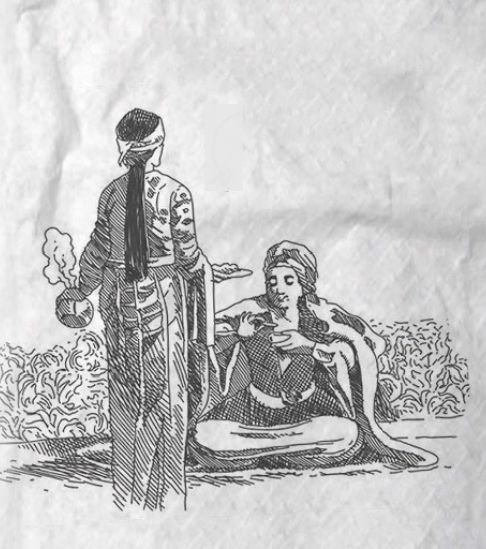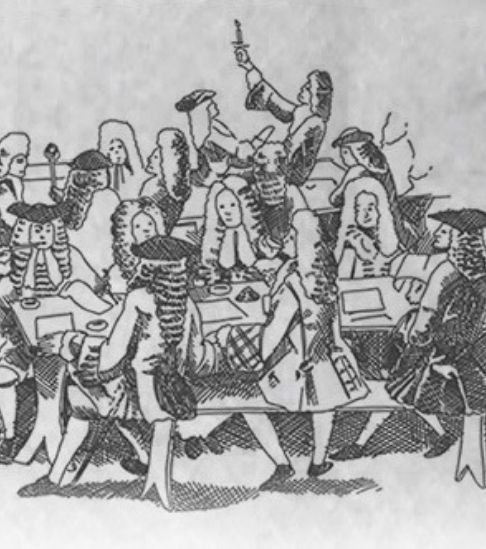
History of Coffee
Kaldi, shepherd of Ethiopia
Legend has it that a minister of Ethiopia, named Kaldi, surprised the resistance of goats ate the berries of a bush with white flowers.
Kaldi, shepherd of Ethiopia

Coffee Plant Arab
The coffee has become of great importance to the Arabs, who before the séc.XVII had the monopoly of the cultivation and marketing of the
"Arabian wine" as it was called coffee, which in Arabic is said qahwa, origin of its name. All coffee beans leaving its ports were poached or roasted. Yemeni rulers prevented so were twinned and cultivated elsewhere.
Brought up in camel caravans to Turkish ports where boats leave for the entire Mediterranean, the consumption of coffee was introduced to Europe in 16/5 from Venice and Marseille, major commercial ports in the Mediterranean.
Coffee Plant Arab

First Coffee House in Meca
Great enthusiasm for this drink, coupled with high prices in the Arab originate intensified efforts to get fertile grain or a living plant that could be grown. This was finally achieved, depending on whether behalf, by a Hindu pilgrim, Baba Budan, who managed to take 7 seeds to India.
The coffee habit was developed in Arab culture, where the first infusions of cherries (green fruit) emerged. Later opened the first coffee houses in Mecca, where he could drink from the XVI century Roasted Coffee, a closest to the actual drink.
First Coffee House in Meca

First Coffee house in Venice
On 16/5 opens first coffee house in Europe in Venice, Bottghe Del Caffè, where converging political and artistic society of the city, and in 1650 opened the first English coffee in Oxford, the first of a multitude of coffee houses that quickly become London European queen of Coffee.
First Coffee house in Venice

Coffee House in London
Less than a century later, due to the lack of coffee in the British colonies, this consumption will be replaced by tea, introduced by Queen Catherine of Braganza at the English court.
In 1687 opened the first coffee house in Vienna, spreading the habit of straining the drink and drink it sweetened with milk, giving the famous vivense coffee. Throughout the century. XVII bloom coffee houses today famous as the Café Procope in Paris, and the Florian Cafe in Venice.
Coffee House in London

Diffusion of coffee with center in Amsterdam
Destination of large shipments of Dutch East India Company from the faraway Asian colonies, where coffee cultivation had then already propagated, Amsterdam becomes the main trading center of coffee at the end of séc.XVII.
Other places such as the Café de Foy, the Totonde, the Coupole, are emblematic places of the century. XIX and XX of socializing and political discussion and to attract artistic personalities like Picasso, Hemingway, Chagall, etc.
Diffusion of coffee with center in Amsterdam

Discovery of Robusta in Angola
Besides the spread of Arabica coffee by the various European colonies, the Portuguese discovered in other species of Angola Current, highest and robust wild coffee trees, which they call canephora, who lived to be more famous by the name of its main range: robust.
Discovery of Robusta in Angola

Coffee as a key commoditie in trade world
In the eighteenth and nineteenth centuries coffee production meets its greatest period of expansion, thanks to the coffee plantations resorted to hand obra escrava for all work land clearing, harvesting and drawing, peeling and drying.
At the end of the century. XIX coffee was already a major commodity, and is currently the second most traded commodity on the stock exchange.
Coffee as a key commoditie in trade world

Invention of the cast machine
In 1822 arises in France, expresso coffee machine, though still nothing more than a prototype. In 1855 is presented in an exhibition in Paris, a more developed machine. It was in Italy that perfected and in 1905, the Italians marketed the first espresso machine, precisely in the same year it was invented a process that allowed the coffee decaffeination.
In 1945, shortly after the end of World War II, Italy continues to have primacy over the cast and Giovanni Gaggia presents a machine where the water passes through the coffee once pressed by a piston pump. The success was remarkable.
Invention of the cast machine

Coffee in everyones daily life
Coffee is currently one of the most consumed beverages in the world, and served about 400 billion cups per year.
The most common type of coffee is Arabica, occupying about three-quarters of world production, followed by robust, which has twice the caffeine contained in the first.
Coffee in everyones daily life
